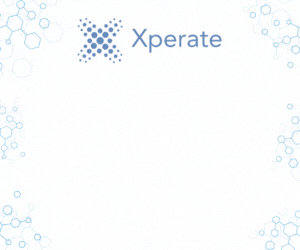Modernising eDiscovery for in-house legal teams – find out more with Reveal
In the dynamic landscape of today’s digital revolution, the legal industry finds itself at a pivotal moment. As technology continues to advance at a rapid pace, traditional methods of managing legal processes are proving insufficient to cope with the exponential growth in data volume and complexity. In response to these challenges, legal teams are embracing innovative solutions that harness the power of cloud computing, machine learning, and AI to modernise their eDiscovery practices. This transformative shift promises not only to streamline workflows and automate tedious tasks but also to enhance data security, reduce costs, and deliver results with unprecedented speed and precision.
Traditional eDiscovery Challenges
Typically, in-house teams would delegate a significant portion of the eDiscovery process to external counsel. Initially, they might handle legal holds and data preservation. However, beyond that, their involvement diminishes, leaving the law firm responsible for decisions such as selecting eDiscovery platforms, engaging service providers, and establishing workflows. This led to several challenges:
- Expensive and Time Consuming: Traditional methods consume substantial time and resources, especially with large datasets. Outsourcing eDiscovery incurs significant costs.
- Complexity: The variety of data sources and formats complicates traditional eDiscovery, leading to inefficiencies.
- Security Risks: Transferring data to third parties introduces vulnerabilities, risking breaches and legal consequences.
- Lack of Control: Outsourcing diminishes control over timelines, work quality, and compliance, increasing risks and reducing efficiency.
In – House eDiscovery
In-house legal teams are now more actively involved in eDiscovery, selecting primary platforms directly and coordinating with providers. They establish approved service providers, enforce consistent protocols, and optimise workflows for efficient task allocation between in-house and external teams. These measures aim to reduce eDiscovery costs, enhance data security, and ensure consistent document treatment, resulting in more timely and higher-quality outcomes. While transitioning to in-house eDiscovery may seem daunting, modern technology simplifies the process, leading to significant time and cost savings. Ultimately, the increased control, security, and agility justify the initial investment.
- Cost Efficiency: Transitioning eDiscovery in-house can yield substantial cost savings by eliminating outsourcing fees. Although there are upfront costs for implementing in-house tools, long-term savings are significant. Better control over data volumes, facilitated by advanced tools, further reduces processing, review, and storage costs.
- Defensibility: In-house eDiscovery solutions enable meticulous documentation of each step, ensuring process defensibility. Audit trail features provide valuable evidence to courts or opposing parties.
- Greater Control and Agility: In-house eDiscovery tools empower legal teams with direct control over the entire process, allowing swift adaptation to changes. Tighter control over timelines, quality, and compliance simplifies management.
- Enhanced Security: Some in-house eDiscovery tools offer robust security measures, minimising the risk of data breaches. This ensures data integrity and confidentiality.
- Leveraging AI and Modern Technology: Modern in-house eDiscovery tools leverage AI and advanced technologies to automate and streamline processes, saving significant time and effort.
- Scalability: In-house eDiscovery tools are scalable, allowing organisations to start small and expand gradually. Teams can handle one case initially and add more areas as needed, adapting to evolving business needs.
Implementing eDiscovery In-House – Best Practices
Implementing in-house eDiscovery involves more than just acquiring a software solution; it necessitates a fundamental shift in how your legal team manages and interacts with data. To streamline the process and maximise benefits, consider the following best practices:
- Understanding your team’s eDiscovery needs and setting clear goals is crucial. Identify objectives such as saving time through the elimination of manual document review or reducing reliance on outside counsel to save costs.
- Choosing the right eDiscovery solution is equally important. Conduct thorough research and consider factors like usability, functionality, and cost-effectiveness. Involving cross-functional teams in the decision-making process ensures that all potential challenges and needs are addressed.
- Emphasise training and change management to ensure successful user adoption of the new eDiscovery platform. Comprehensive training and ongoing support are key to helping your team utilise the solution effectively.
- Establishing a clear eDiscovery workflow is essential. Define roles, responsibilities, and data management protocols to maintain consistency and prevent crucial information from being overlooked. Anticipate potential issues and establish protocols for addressing them quickly.
- Adjust processes as needed to support business changes. In-house eDiscovery allows for flexibility and customisation, enabling your team to adapt to evolving needs. Regular reviews and audits help optimise processes and ensure the system operates as expected.
Conclusion
In today’s digital era, eDiscovery confronts both challenges and opportunities. As data volumes surge and legal complexities intensify, in-house legal teams must adapt. Yet, modern cloud-based eDiscovery solutions present efficiency and strategic advantages. Transitioning in-house isn’t merely about new software; it signifies streamlined, secure processes. With improved workflows, advanced search, and AI automation, legal teams regain control, managing data volumes and regulations adeptly.



